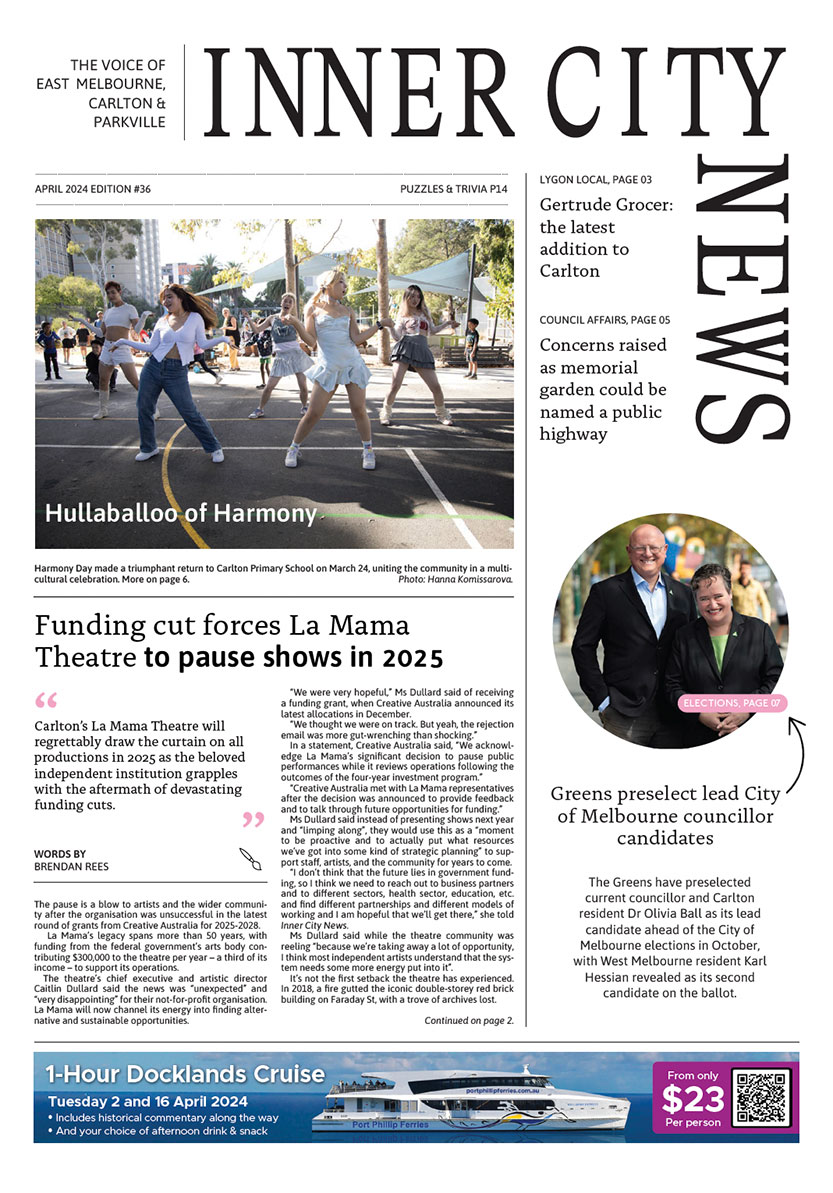Council’s ongoing payphone battle heads to VCAT
A bid to install dozens of payphones across the CBD and Carlton that would be splashed with advertising and cause “unnecessary clutter” on footpaths is set for a state planning tribunal stoush.
The City of Melbourne is set to oppose 35 phone booth applications, which would feature 75-inch coloured electronic advertising signs, and measure 2.73m high and 1.2m wide.
It will take its case to the Victorian Civil and Administrative Tribunal (VCAT) over a 10-week period as outdoor billboard advertising company JCDecaux pushes to install 47 payphones across the city, which are part of Telstra’s upgrading of its existing national network.
The council will support issuing a permit for 12 of the 47 payphone applications, 11 of which would replace existing payphones.
But the remaining 35 applications for “smart city payphones” would be opposed on the grounds that electronic advertising would be an “unacceptable addition” to parts of the city, “unreasonably impact” pedestrian networks, and be contrary to the character of various areas.
Councillors voted unanimously at their May 16 Future Melbourne Committee meeting to proceed with the matter going to VCAT after a motion was led by the council’s planning portfolio chair Cr Nicholas Reece.
“It is really important that we keep unnecessary clutter off our footpaths,” he said.
Those footpaths are precious, and we must make sure that they are regulated carefully and that they serve the millions of people who use them every year as effectively and efficiently as possible.
With the story first broken by sister publication CBD News, Cr Reece said the matter was a “long running saga” after the council rejected 81 planning applications made by JCDecaux for phone booths in 2019.
“We refused all of those applications on the basis that they weren’t really payphones. They were large, electronic billboards masquerading as telephone services on the streets of Melbourne.”
In response, Telstra took the case to the Federal Court and won after arguing the phone booths were “low impact facilities” and thus exempt from requiring planning permission.
But the council appealed at the Full Court of the Federal Court, which sided with the City of Melbourne.
In late 2021 a series of procedural orders were made requiring updates and amendments to the applications to reflect the findings from the Federal Court proceedings, a council report said.
In preparing for the VCAT hearings, Cr Reece said while the council had “a long way to go”, it had created a “really robust set of criteria and a really robust framework by which to assess each of these cabinets”.
“We have gone through and very methodically assessed each cabinet against those key criteria.”
“This does mark a very significant milestone in what can only be described as a long running saga regarding Melbourne’s Telstra phone cabinets.”
Cr Rohan Leppert said the VCAT hearing would be “keeping the interests of the city at the forefront while being as fair and reasonable in a very contested and complicated regulatory environment” in the absence of case law.
“It is unfortunate that this is planning by lawyers not planning by transparent and accountable, and easy to access and understand planning systems,” he said.
“Nevertheless, we do have the prospect for a balanced and fair and reasonable outcome that gives the applicant a reasonable outcome while preserving the interests of the public in the city.” •

Carlton language school championed by Ukrainian refugee






 Download the Latest Edition
Download the Latest Edition